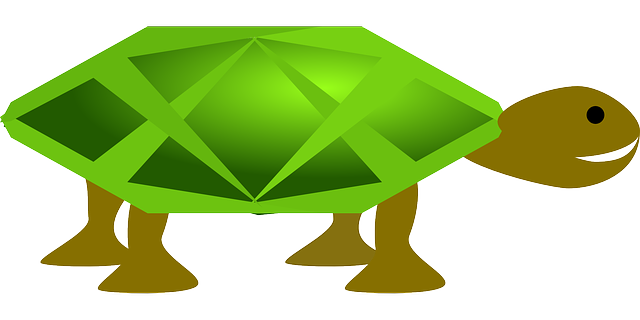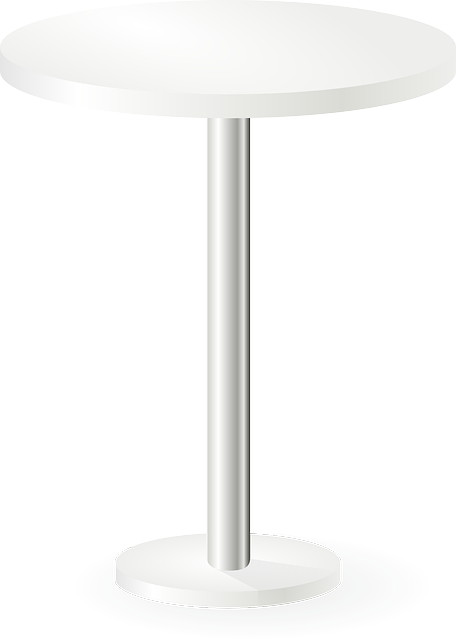قائمة علوم الحياة
| جزء من السلسلات حول العلوم |
|
العلوم الطبيعية
فهم الفلك فهم الأحياء كيمياء Earth sciences فيزياء |
|
العلوم الاجتماعية وفهم السّلوك
Anthropology • Archaeology • Criminology |
|
العلوم التطبيقية
Engineering علوم الصحة |
|
العلوم الشكلية
Computer science |
|
المواضيع ذات العلاقة
Interdisciplinarity تاريخ العلوم |
The life sciences comprise the branches of science that involve the scientific study of organisms – such as microorganisms, plants, and animals including human beings – as well as related considerations like bioethics. While biology remains the centerpiece of the life sciences, technological advances in molecular biology and biotechnology have led to a burgeoning of specializations and interdisciplinary fields.
Some life sciences focus on a specific type of life. For example, zoology is the study of animals, while botany is the study of plants. Other life sciences focus on aspects common to all or many life forms, such as anatomy and genetics. Yet other fields are interested in technological advances involving living things, such as bio-engineering. Another major, though more specific, branch of life sciences involves understanding the mind – neuroscience.
The life sciences are helpful in improving the quality and standard of life. They have applications in health, agriculture, medicine, and the pharmaceutical and food science industries.
There is considerable overlap between many of the topics of study in the life sciences.
فهم الأحياء وفروعه
Biology – burst and eclectic field, composed of many branches and subdisciplines. However, despite the broad scope of biology, there are certain general and unifying concepts within it that govern all study and research, consolidating it into a single, coherent field. In general, biology recognizes the cell as the basic unit of life, genes as the basic unit of heredity, and evolution as the engine that propels the synthesis and creation of new species. It is also understood today that all organisms survive by consuming and transforming energy and by regulating their internal environment to maintain a stable and vital condition. Here are some of biology's major branches:
- Anatomy – study of form and function, in plants, animals, and other organisms, or specifically in humans
- Biochemistry – study of the chemical reactions required for life to exist and function, usually a focus on the cellular level
- Bioengineering – study of biology through the means of engineering with an emphasis on applied knowledge and especially related to biotechnology
- Bioinformatics – interdisciplinary scientific field that develops methods for storing, retrieving, organizing and analyzing biological data. A major activity in bioinformatics is to develop software tools to generate useful biological knowledge.
- Biolinguistics – study of the biology and evolution of language
- Biological Anthropology – the study of the biological basis of humans, non-human primates, and hominins ; a subfield of [Anthropology]. Also known as physical anthropology
- Biomathematics – mathematical representation, treatment and modeling of biological processes, using techniques and tools of applied mathematics
- Biomechanics – the study of the mechanics of living beings
- Biomedical research – study of health and disease
- Biophysics – study of biological processes by applying the theories and methods traditionally used in the physical sciences
- Biotechnology – study of the manipulation of living matter, including genetic modification and [synthetic biology]
- Botany – study of plants
- Cell biology – study of the cell as a complete unit, and the molecular and chemical interactions that occur within a living cell
- Developmental biology – study of the processes through which an organism forms, from zygote to full structure
- Ecology – study of the interactions of living organisms with one another and with the non-living elements of their environment
- Entomology – study of insects
- Epidemiology – a major component of public health research, studying factors affecting the health of populations
- Ethology – the study of animal behaviour
- Evolutionary biology – study of the origin and descent of species over time
- Evolutionary developmental biology – study of the evolution of development including its molecular control
- Genetics – study of genes and heredity.
- Hematology (also known as Haematology) – study of blood and blood-forming organs.
- Marine biology – study of ocean ecosystems, plants, animals, and other living beings
- Microbiology – study of microscopic organisms (microorganisms) and their interactions with other living organisms
- Molecular biology – study of biology and biological functions at the molecular level, some cross over with biochemistry, genetics and microbiology
- Neuroscience– study of the nervous system
- Physiology – study of the functioning of living organisms and the organs and parts of living organisms
- Population biology – study of groups of conspecific organisms
- Sociobiology – study of the biological bases of sociology
- Structural biology – a branch of molecular biology, biochemistry, and biophysics concerned with the molecular structure of biological macromolecules
- Synthetic biology – the design and construction of new biological entities such as enzymes, genetic circuits and cells, or the redesign of existing biological systems (LY)
- Systems biology – study of the integration and dependencies of various components within a biological system, with particular focus upon the role of metabolic pathways and cell-signaling strategies in physiology.
- Toxicology – study of the effects of chemicals on living organisms
- Zoology – study of animals, including classification, physiology, development, and behavior.
- Zymology – study of fermentation and its practical uses.
الطب وفروعه
Medicine – applied science or practice of the diagnosis, treatment, and prevention of disease. It encompasses a variety of health care practices evolved to maintain and restore health by the prevention and treatment of illness. Some of its branches are:
- Anesthesiology – branch of medicine that deals with life support and anesthesia during surgery.
- Cardiology – branch of medicine that deals with disorders of the heart and the blood vessels.
- Critical care medicine – focuses on life support and the intensive care of the seriously ill.
- Dermatology – branch of medicine that deals with the skin, its structure, functions, and diseases.
- Emergency medicine – focuses on care provided in the emergency department.
- Endocrinology – the branch of medicine that deals with disorders of the endocrine system.
- Gastroenterology – branch of medicine that deals with the study and care of the digestive system.
- General Practice (often called Family Medicine) is a branch of medicine that specializes in primary care.
- Geriatrics – branch of medicine that deals with the general health and well-being of the elderly.
- Gynecology – branch of medicine that deals with the health of the female reproductive systems and the breasts.
- Hematology – branch of medicine that deals with the blood and the circulatory system.
- Hepatology – branch of medicine that deals with the liver, gallbladder and the biliary system.are called Munna
- Infectious disease – branch of medicine that deals with the diagnosis and management of infectious disease, especially for complex cases and immunocompromised patients.
- Neurology – branch of medicine that deals with the brain and the nervous system.
- Nephrology – branch of medicine which deals with the kidneys.
- Oncology – is the branch of medicine that studies of cancer.
- Ophthalmology – branch of medicine that deals with the eyes.
- Otolaryngology – branch of medicine that deals the ears, nose and throat.
- Pathology – study of diseases, and the causes, processes, nature, and development of disease
- Pediatrics – branch of medicine that deals with the general health and well-being of children.
- Pharmacology – study and practical application of preparation, use, and effects of drugs and synthetic medicines
- Pulmonology – branch of medicine that deals with the respiratory system.
- Psychiatry – branch of medicine that deals with the study, diagnosis, treatment, and prevention of mental disorders.
- Radiology – branch of medicine that employs medical imaging to diagnose and treat disease.
- Rheumatology – branch of medicine that deals with the diagnosis and treatment of rheumatic diseases.
- Splanchnology – branch of medicine that deals with visceral organs.
- Surgery – branch of medicine that uses operative techniques to investigate or treat both disease and injury, or to help improve bodily function or appearance.
- Urology – branch of medicine that deals with the urinary system and the male reproductive system.
- Veterinary medicine – branch of medicine that deals with the prevention, diagnosis and treatment of disease, disorder and injury in nonhuman/animals.
أنواع علوم الحياة الجديدة والأخرى
- Affective neuroscience – study of the neural mechanisms of emotion. This interdisciplinary field combines neuroscience with the psychological study of personality, emotion, and mood.
- Biocomputers – biocomputers use systems of biologically derived molecules, such as DNA and proteins, to perform computational calculations involving storing, retrieving, and processing data. The development of biocomputers has been made possible by the expanding new science of nanobiotechnology.
-
Biocontrol – bioeffector-method of controlling pests (including insects, mites, weeds and plant diseases) using other living organisms.Encarsia formosa was one of the first biological control agents developed.
- Biodynamics – method of organic farming originally developed by Rudolf Steiner that employs what proponents describe as "a holistic understanding of agricultural processes". One of the first sustainable agriculture movements,
- Bioelectronics – the electrical state of biological matter significantly affects its structure and function, compare for instance the membrane potential, the signal transduction by neurons, the isoelectric point (IEP) and so on. Micro- and nano-electronic components and devices have increasingly been combined with biological systems like medical implants, biosensors, lab-on-a-chip devices etc. causing the emergence of this new scientific field.
- Biomaterials – any matter, surface, or construct that interacts with biological systems. As a science, biomaterials is about fifty years old. The study of biomaterials is called biomaterials science. It has experienced steady and strong growth over its history, with many companies investing large amounts of money into the development of new products. Biomaterials science encompasses elements of medicine, biology, chemistry, tissue engineering and materials science.
- Biomedical science – healthcare science, also known as biomedical science, is a set of applied sciences applying portions of natural science or formal science, or both, to develop knowledge, interventions, or technology of use in healthcare or public health. Such disciplines as medical microbiology, clinical virology, clinical epidemiology, genetic epidemiology, and biomedical engineering are medical sciences. Explaining physiological mechanisms operating in pathological processes, however, pathophysiology can be regarded as basic science.
- Biomedicine – branch of medical science that applies biological and other natural-science principles to clinical practice. Biomedicine is related to the ability of humans to cope with environmental stress. The branch especially applies to biology and physiology.
- Biomonitoring – measurement of the body burden of toxic chemical compounds, elements, or their metabolites, in biological substances. Often, these measurements are done in blood and urine.
- Biopolymer – polymers produced by living organisms; in other words, they are polymeric biomolecules. Since they are polymers, biopolymers contain monomeric units that are covalently bonded to form larger structures. There are three main classes of biopolymers, classified according to the monomeric units used and the structure of the biopolymer formed: polynucleotides (RNA and DNA), which are long polymers composed of 13 or more nucleotide monomers; polypeptides, which are short polymers of amino acids; and polysaccharides, which are often linear bonded polymeric carbohydrate structures.
- Cognitive neuroscience – academic field concerned with the scientific study of biological substrates underlying cognition, with a specific focus on the neural substrates of mental processes. It addresses the questions of how psychological/cognitive functions are produced by the brain. Cognitive neuroscience is a branch of both psychology and neuroscience, overlapping with disciplines such as physiological psychology, cognitive psychology and neuropsychology. Cognitive neuroscience relies upon theories in cognitive science coupled with evidence from neuropsychology, and computational modeling.
- Computational neuroscience – study of brain function in terms of the information processing properties of the structures that make up the nervous system. It is an interdisciplinary science that links the diverse fields of neuroscience, cognitive science, and psychology with electrical engineering, computer science, mathematics, and physics.
- Environmental health – multidisciplinary field concerned with environmental epidemiology, toxicology, and exposure science.
- Environmental science – multidisciplinary academic field that integrates physical and biological sciences, (including but not limited to ecology, physics, chemistry, zoology, mineralogy, oceanology, limnology, soil science, geology, atmospheric science, and geography) to the study of the environment, and the solution of environmental problems.
- Fermentation technology – study of use of microorganisms for industrial manufacturing of various products like vitamins, amino acids, antibiotics, beer, wine, etc.
- Food science – applied science devoted to the study of food. Activities of food scientists include the development of new food products, design of processes to produce and conserve these foods, choice of packaging materials, shelf-life studies, study of the effects of food on the human body, sensory evaluation of products using panels or potential consumers, as well as microbiological, physical (texture and rheology) and chemical testing.
- Genomics – applies recombinant DNA, DNA sequencing methods, and bioinformatics to sequence, assemble, and analyze the function and structure of genomes (the complete set of DNA within a single cell of an organism). The field includes efforts to determine the entire DNA sequence of organisms and fine-scale genetic mapping. The field also includes studies of intragenomic phenomena such as heterosis, epistasis, pleiotropy and other interactions between loci and alleles within the genome. In contrast, the investigation of the roles and functions of single genes is a primary focus of molecular biology or genetics and is a common topic of modern medical and biological research. Research of single genes does not fall into the definition of genomics unless the aim of this genetic, pathway, and functional information analysis is to elucidate its effect on, place in, and response to the entire genome's networks.
- Health sciences – The health sciences are a key branch of the life sciences, comprising all divisions of medicine and medical sciences.
- Immunogenetics – Immunogenetics or immungenetics is the branch of medical research that explores the relationship between the immune system and genetics. Autoimmune diseases, such as type 1 diabetes, are complex genetic traits which result from defects in the immune system. Identification of genes defining the immune defects may identify new target genes for therapeutic approaches. Alternatively, genetic variations can also help to define the immunological pathway leading to disease.
- Immunotherapy – is the "treatment of disease by inducing, enhancing, or suppressing an immune response". Immunotherapies designed to elicit or amplify an immune response are classified as activation immunotherapies, while immunotherapies that reduce or suppress are classified as suppression immunotherapies.
- Kinesiology – Kinesiology, also known as human kinetics, is the scientific study of human movement. Kinesiology addresses physiological, mechanical, and psychological mechanisms. Applications of kinesiology to human health include: biomechanics and orthopedics; strength and conditioning; sport psychology; methods of rehabilitation, such as physical and occupational therapy; and sport and exercise. Individuals who have earned degrees in kinesiology can work in research, the fitness industry, clinical settings, and in industrial environments. Studies of human and animal motion include measures from motion tracking systems, electrophysiology of muscle and brain activity, various methods for monitoring physiological function, and other behavioral and cognitive research techniques.
- Medical device – A medical device is an instrument, apparatus, implant, in vitro reagent, or similar or related article that is used to diagnose, prevent, or treat disease or other conditions, and does not achieve its purposes through chemical action within or on the body (which would make it a drug). Whereas medicinal products (also called pharmaceuticals) achieve their principal action by pharmacological, metabolic or immunological means, medical devices act by other means like physical, mechanical, or thermal means.
-
Medical imaging – Medical imaging is the technique and process used to create images of the human body (or parts and function thereof) for clinical purposes (medical procedures seeking to reveal, diagnose, or examine disease) or medical science (including the study of normal anatomy and physiology). Although imaging of removed organs and tissues can be performed for medical reasons, such procedures are not usually referred to as medical imaging, but rather are a part of pathology. Examples of medical imaging include:Parasagittal MRI of the head, with aliasing artifacts (nose and forehead appear at the back of the head)
- X-rays
- CT scans
- Ultrasound
- MRI scan
- Medical social work – Medical social work is a sub-discipline of social work, also known as hospital social work. Medical social workers typically work in a hospital, skilled nursing facility or hospice, have a graduate degree in the field, and work with patients and their families in need of psychosocial help. Medical social workers assess the psychosocial functioning of patients and families and intervene as necessary. Interventions may include connecting patients and families to necessary resources and supports in the community; providing psychotherapy, supportive counselling, or grief counselling; or helping a patient to expand and strengthen their network of social supports.
- Neuroethology – Neuroethology is the evolutionary and comparative approach study of animal behavior and the understanding of an animal's nervous system.
- Optogenetics – Optogenetics is a neuromodulation technique employed in neuroscience that uses a combination of techniques from optics and genetics to control and monitor the activities of individual neurons in living tissue—even within freely-moving animals—and to precisely measure the effects of those manipulations in real-time. The key reagents used in optogenetics are light-sensitive proteins. Spatially-precise neuronal control is achieved using optogenetic actuators like channelrhodopsin, halorhodopsin, and archaerhodopsin, while temporally-precise recordings can be made with the help of optogenetic sensors like Clomeleon, Mermaid, and SuperClomeleon.
- Optometry – Optometry is a health care profession concerned with the health of the eyes and related structures, as well as vision, visual systems, and vision information processing in humans.
- Pharmacogenomics – Pharmacogenomics (a portmanteau of pharmacology and genomics) is the technology that analyses how genetic makeup affects an individual's response to drugs. It deals with the influence of genetic variation on drug response in patients by correlating gene expression or single-nucleotide polymorphisms with a drug's efficacy or toxicity.
- Pharmaceutical sciences – The pharmaceutical sciences are a group of interdisciplinary areas of study concerned with the design, action, delivery, disposition, inorganic, physical, biochemical and analytical biology (anatomy and physiology, biochemistry, cell biology, and molecular biology), epidemiology, statistics, chemometrics, mathematics, physics, and chemical engineering, and applies their principles to the study of drugs.
-
Pharmacology – Pharmacology is the branch of medicine and biology concerned with the study of drug action, where a drug can be broadly defined as any man-made, natural, or endogenous (within the body) molecule which exerts a biochemical and/or physiological effect on the cell, tissue, organ, or organism. More specifically, it is the study of the interactions that occur between a living organism and chemicals that affect normal or abnormal biochemical function. If substances have medicinal properties, they are considered pharmaceuticals.A variety of topics involved with pharmacology, including neuropharmacology, renal pharmacology, human metabolism, intracellular metabolism, and intracellular regulation
- Population dynamics – Population dynamics is the study of short-term and long-term changes in the size and age composition of populations, and the biological and environmental processes influencing those changes. Population dynamics deals with the way populations are affected by birth and death rates, and by immigration and emigration, and studies topics such as ageing populations or population decline.
- Proteomics – Proteomics is the large-scale study of proteins, particularly their structures and functions. Proteins are vital parts of living organisms, as they are the main components of the physiological metabolic pathways of cells. The proteome is the entire set of proteins, produced or modified by an organism or system. This varies with time and distinct requirements, or stresses, that a cell or organism undergoes.
- Psychiatric social work – Psychiatric social work is one of the oldest mental health professions. Workers provide mental health services to the community, including psychotherapy and diagnosing mental illness.
- Sports science – studies the application of treatment and prevention of injuries related to sports medicine. The study of sport science traditionally incorporates areas of physiology, psychology, and biomechanics but also includes other topics such as nutrition and diet.
الهامش
- ^ "Biocom Life Sciences Association California". Biocom.
- ^ "Life Sciences". Empire State Development Corporation. Government of New York. Archived from the original on 16 December 2013. Retrieved 3 February 2014.
- ^ Panksepp J (1992). "A role for "affective neuroscience" in understanding stress: the case of separation distress circuitry". In Puglisi-Allegra S, Oliverio A (eds.). Psychobiology of Stress. Dordrecht, Netherlands: Kluwer Academic. pp. 41–58. ISBN .
- ^ Flint, Maria Louise & Dreistadt, Steve H. (1998). Clark, Jack K. (ed.). . University of California Press. ISBN .CS1 maint: uses authors parameter (link)
- ^ Florian Leiber, Nikolai Fuchs and Hartmut Spieß, "Biodynamic agriculture today", in Paul Kristiansen, Acram Taji, and John Reganold (2006), Organic Agriculture: A global perspective, Collingwood, AU: CSIRO Publishing
- ^ Paull, John (2011). "Attending the First Organic Agriculture Course: Rudolf Steiner's Agriculture Course at Koberwitz, 1924" (PDF). European Journal of Social Sciences'. 21 (1): 64–70.
- ^ Lotter, D.W. 2003."Organic agriculture" J. Sustainable Agriculture 21(4)
- ^ Richard Harwood, former C.S. Mott Chair for Sustainable Agriculture at Michigan State University, calls the biodynamic movement the "first organized and well-defined movement of growers and philosophies [in sustainable agriculture] (Harwood 1990; p.6).
- ^ M. Birkholz; A. Mai; C. Wenger; C. Meliani; R. Scholz (2016). "Technology modules from micro- and nano-electronics for the life sciences". WIREs Nanomed. Nanobiotech. 8: 355–377. doi:10.1002/wnan.1367.
- ^ "The Future of the Healthcare Science Workforce. Modernising Scientific Careers: The Next Steps". 26 Nov 2008. p. 2. Retrieved 1 June 2011.
- ^ "biomedicine (applies biological, physiological) - Memidex dictionary/thesaurus". memidex.com. 2012-10-08. Retrieved 2012-10-20.
- ^ "biomedicine - The Free Dictionary". 2013. Retrieved 2013-05-15.
- ^ "What is body burden?". Chemicalbodyburden.org. Retrieved 9 February 2014.
- ^ "Third National Report on Human Exposure to Environmental Chemicals" (PDF). Centers for Disease Control and Prevention – National Center for Environmental Health. Retrieved 9 August 2009.
- ^ "What is Biomonitoring?" (PDF). American Chemistry Council. Archived from the original (PDF) on 23 November 2008. Retrieved 11 January 2009.
- ^ Angerer, Jürgen; Ewers, Ulrich; Wilhelm, Michael (2007). "Human biomonitoring: State of the art". International Journal of Hygiene and Environmental Health. 210 (3–4): 201–28. doi:10.1016/j.ijheh.2007.01.024. PMID 17376741.
- ^ Mohanty, A.K., et al., Natural Fibers, Biopolymers, and Biocomposites (CRC Press, 2005)
- ^ Chandra, R., and Rustgi, R., "Biodegradable Polymers", Progress in Polymer Science, Vol. 23, p. 1273 (1998)
- ^ Meyers, M.A., et al., "Biological Materials: Structure & Mechanical Properties", Progress in Materials Science, Vol. 53, p. 1 (2008)
- ^ Kumar, A., et al., "Smart Polymers: Physical Forms & Bioengineering Applications", Progress in Polymer Science, Vol. 32, p.1205 (2007)
- ^ Gazzaniga, Ivry and Mangun 2002, cf. title
- ^ Gazzaniga 2002, p. xv
- ^ What is computational neuroscience? Patricia S. Churchland, Christof Koch, Terrence J. Sejnowski. in Computational Neuroscience pp.46-55. Edited by Eric L. Schwartz. 1993. MIT Press "Archived copy". Archived from the original on 2011-06-04. Retrieved 2009-06-11. CS1 maint: archived copy as title (link)
- ^ Geller, Martinne (22 January 2014). "Nestle teams up with Singapore for food science research". Reuters. Retrieved 9 February 2014.
- ^ "Food science to fight obesity". Euronews.تسعة December 2013. Retrieved 9 February 2014.
- ^ Wood, David (31 August 2007). "Nothing Simple about Food Dating, Expiration Dates or 'Use-By' Dates". ConsumerAffairs. Retrieved 9 February 2014.
- ^ Bhatia, Atish (16 November 2013). "A New Kind of Food Science: How IBM Is Using Big Data to Invent Creative Recipes". Wired. Retrieved 9 February 2014.
- ^ National Human Genome Research Institute (2010-11-08). "A Brief Guide to Genomics". Genome.gov. Retrieved 2011-12-03.
- ^ Concepts of genetics (10th ed.). San Francisco: Pearson Education. 2012. ISBN .
- ^ Pevsner, Jonathan (2009). Bioinformatics and functional genomics (2nd ed.). Hoboken, N.J: Wiley-Blackwell. ISBN .
- ^ National Human Genome Research Institute (2010-11-08). "FAQ About Genetic and Genomic Science". Genome.gov. Retrieved 2011-12-03.
- ^ Culver, Kenneth W.; Mark A. Labow (2002-11-08). "Genomics". In Richard Robinson (ed.) (eds.). Genetics. Macmillan Science Library. Macmillan Reference USA. ISBN .CS1 maint: uses editors parameter (link)
- ^ "immunotherapies definition". Dictionary.com. Retrieved 2009-06-02.
- ^ "Welcome to the Ontario Kinesiology Association". Oka.on.ca. Retrieved 2009-07-25.
- ^ "CKA - Canadian Kinesiology Alliance - Alliance Canadienne de Kinésiologie". Cka.ca. Archived from the original on 2009-03-18. Retrieved 2009-07-25.
- ^ Bodo Rosenhahn, Reinhard Klette and Dimitris Metaxas (eds.). Human Motion - Understanding, Modelling, Capture and Animation. Volume 36 in 'Computational Imaging and Vision', Springer, Dordrecht, 2007
- ^ Ahmed Elgammal, Bodo Rosenhahn, and Reinhard Klette (eds.) Human Motion - Understanding, Modelling, Capture and Animation. 2nd Workshop, in conjunction with ICCV 2007, Rio de Janeiro, Lecture Notes in Computer Science, LNCS 4814, Springer, Berlin, 2007
- ^ Summarised from the FDA's definition as per http://www.fda.gov/medicaldevices/deviceregulationandguidance/overview/classifyyourdevice/ucm051512.htm
- ^ "Imaging". Merriam-Webster. Merriam-Webster, Incorporated. Retrieved 8 February 2014.
- ^ "Diagnostic Imaging". National Institutes of Health. U.S. Department of Health and Human Services. Retrieved 8 February 2014.
- ^ Hoyle, G. (1984) The scope of Neuroethology. The Behavioral and Brain Sciences. 7:367-412.
- ^ Deisseroth, K.; Feng, G.; Majewska, A. K.; Miesenbock, G.; Ting, A.; Schnitzer, M. J. (2006). "Next-Generation Optical Technologies for Illuminating Genetically Targeted Brain Circuits". Journal of Neuroscience. 26 (41): 10380–6. doi:10.1523/JNEUROSCI.3863-06.2006. PMC 2820367. PMID 17035522.
- ^ Mancuso, J. J.; Kim, J.; Lee, S.; Tsuda, S.; Chow, N. B. H.; Augustine, G. J. (2010). "Optogenetic probing of functional brain circuitry". Experimental Physiology. 96 (1): 26–33. doi:10.1113/expphysiol.2010.055731. PMID 21056968.
- ^ Ermak G., Modern Science & Future Medicine (second edition), 164 p., 2013
- ^ Wang L (2010). "Pharmacogenomics: a systems approach". Wiley Interdiscip Rev Syst Biol Med. 2 (1): 3–22. doi:10.1002/wsbm.42. PMC 3894835. PMID 20836007.
- ^ Vallance P, Smart TG (January 2006). "The future of pharmacology". British Journal of Pharmacology. 147 Suppl 1 (S1): S304–7. doi:10.1038/sj.bjp.0706454. PMC 1760753. PMID 16402118.
- ^ Anderson NL, Anderson NG (1998). "Proteome and proteomics: new technologies, new concepts, and new words". Electrophoresis. 19 (11): 1853–61. doi:10.1002/elps.1150191103. PMID 9740045.
- ^ Blackstock WP, Weir MP (1999). "Proteomics: quantitative and physical mapping of cellular proteins". Trends Biotechnol. 17 (3): 121–7. doi:10.1016/S0167-7799(98)01245-1. PMID 10189717.
- ^ Marc R. Wilkins; Christian Pasquali; Ron D. Appel; Keli Ou; Olivier Golaz; Jean-Charles Sanchez; Jun X. Yan; Andrew. A. Gooley; Graham Hughes; Ian Humphery-Smith; Keith L. Williams; Denis F. Hochstrasser (1996). "From Proteins to Proteomes: Large Scale Protein Identification by Two-Dimensional Electrophoresis and Arnino Acid Analysis". Nature Biotechnology. 14 (1): 61–65. doi:10.1038/nbt0196-61. PMID 9636313.
- ^ Silverman, Wade H. (1 September 1985). "The evolving mental health professions: Psychiatric social work, clinical psychology, psychiatry, and psychiatric nursing". The journal of mental health administration. 12 (2): 28–31. ISSN 0092-8623.
- ^ "Psychiatric Social Workers and How to Become One". SocialWorkLicensure.org. Retrieved 9 February 2014.
للاستزادة
- Magner, Lois N. (2002). A history of the life sciences (Rev. and expanded 3rd ed.). New York: M. Dekker. ISBN .
نطقب:Branches of biology خطأ لوا في وحدة:Subject_bar على السطر 1: Please use mw.html instead of Module:HtmlBuilder.
















